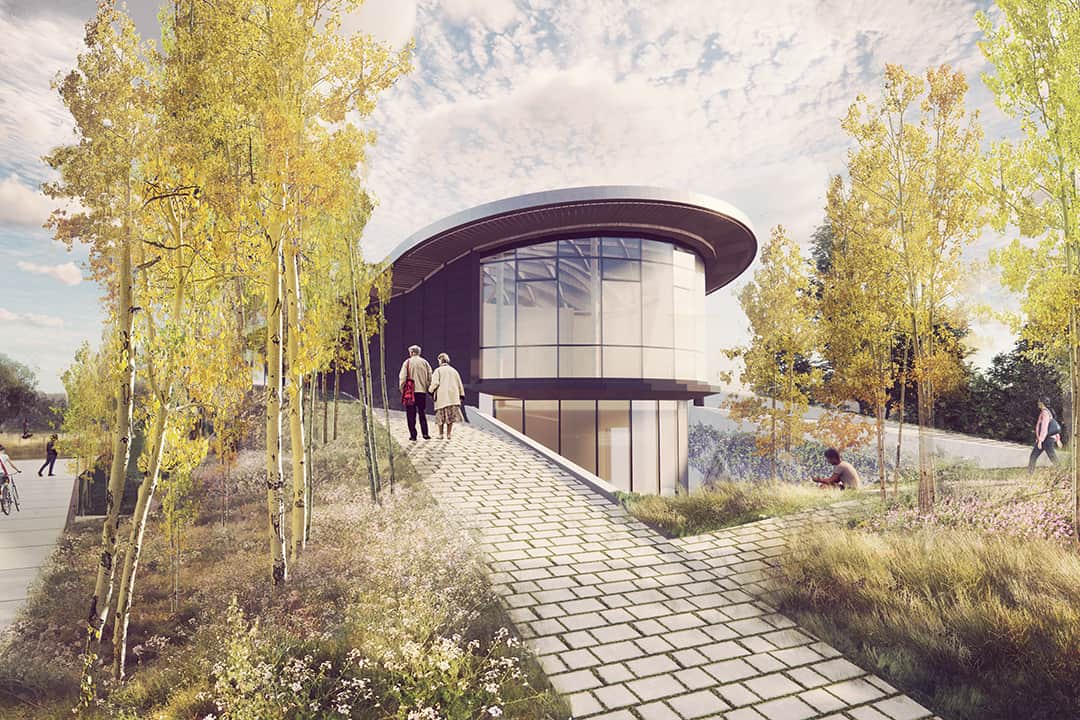A new Indigenous House, which will provide space for Indigenous students and community members, is in the works at UTSC. Construction is expected to begin next summer, and the house will be built adjacent to Ellesmere Road.
The two-story building will serve as a campus hub, while also celebrating traditions, practices, and ways of knowing of Indigenous peoples. A specific focus will be given to those residing on the land covered by the Williams Treaties, where UTSC is located.
The floor plan includes a variety of services, including a community kitchen, a student lounge, a library, a multi-purpose room, and offices for elders, faculty, and staff. The second floor will provide meeting space.
“It’s a home away from home,” Alfred Waugh, the designer of the Indigenous House, said in an interview with Toronto.com. He further explained that universities often have trouble retaining Indigenous students “because of that culture shock” — a problem the Indigenous House hopes to fix.
As founder of Formline Architecture — one of Canada’s few firms led by an Indigenous architect — Waugh has created designs for other buildings including the Indian Residential School History and Dialogue Centre at the University of British Columbia.
Waugh said that his intention for the building was to “[place] nature at the centre of our value systems.” This vision will be incorporated through the inclusion of traditional plants and the use of a heat detector in place of a smoke alarm in order to accommodate smudging, a spiritual burning of sacred plants to remove negative energy. The design is also partially inspired by a wigwam, a type of dome structure used by some Indigenous peoples in North America.
To moderate room temperatures in the extreme heat or cold, the building will also include “earth tubes” set 2.7 metres below ground that use the ground’s force to control the temperatures.
Though only six Indigenous staff members work at UTSC, it is not known how many Indigenous students attend the campus. In a statement to The Varsity, the Scarborough Campus Indigenous Student Association (SCISA) stressed the importance of these students having “a safe space to go to.”
“It enables them to practice and learn about their cultures without judgement or restrictive guidelines,” the SCISA wrote. “Having this Indigenous House will promote reconciliation and will be an informative space for non-Indigenous students, staff, and faculty on different aspects of Indigenous history and culture.”
“We look forward to future Indigenous and non-Indigenous peoples benefiting from the advancements made in support of reconciliation,” the SCISA wrote of UTSC’s recent installments. “Overall, we are excited to hear of [the Indigenous House] and expect it to aide future students and their well-being on campus.”
While not possible during COVID-19, additional Indigenous resources at UTSC included a semi-annual Indigenous Experiential Journey Trip for students and the allowance of smudging ceremonies in common indoor spaces, provided a two-day notice was given. With the Indigenous House built, the required two-day notice, which the SCISA called ‘restrictive,’ will no longer be necessary. They also expressed optimism that having the Indigenous House as a dedicated space for Indigenous groups on campus will help streamline events and provide regularity.
Another example of recent Indigenous initiatives at the campus is a mural at UTSC’s Meeting Place painted by Métis artist Christi Belcourt and artist Isaac Murdoch of Serpent River First Nation. The mural was inspired by environmental activist Nokomis Josephine-ba Mandamin of Wikwemikong First Nation, who walked 17,000 kilometres around the Great Lakes to raise awareness about water injustice.


